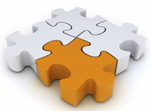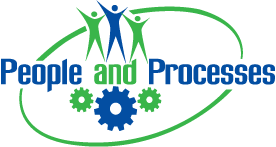 You are the Maintenance Planner Scheduler at Alpha XY Corporation. It’s the first thing on Monday morning and you run a scan for unplanned jobs that have popped up in your queue since last week. Among the jobs to be planned is one to rebuild a pump at the Slurry Feed system. You scan your Job Plan Library and notice this one has never been done before so you head out to the field to research the job. At the job site, you make your notes and take a few pictures with a camera to help your planning effort.
You are the Maintenance Planner Scheduler at Alpha XY Corporation. It’s the first thing on Monday morning and you run a scan for unplanned jobs that have popped up in your queue since last week. Among the jobs to be planned is one to rebuild a pump at the Slurry Feed system. You scan your Job Plan Library and notice this one has never been done before so you head out to the field to research the job. At the job site, you make your notes and take a few pictures with a camera to help your planning effort.
Back at the desk, you attempt to pull up the Bill of Materials for that piece of equipment in the Functional Location. It turns out there is no Bill of Material (BOM). When you look at the asset information for that Functional Location, there is nothing that you could order the pump by. While you are in the discovery mode for the pump, you notice that the adjacent equipment is not reflected in the CMMS either. Geez! Well it happens that you did get the nameplate data from the pump when you visited the site so you can pull the spare from the Storeroom and send the pump for repair. What about all of the other adjacent equipment that we have no information on? How do we capture the data on those items and build the BOMs?
Since you have the information on the pump itself, you can pull the OEM parts list from the Vendor manual. Using the work order information and your experience, you can make an educated guess on the parts required to rebuild it. To start a Job Plan, all you need are the crafts required, the estimated hours, and the materials. The Technician can provide the task steps and other Job Plan information on the work order feedback as part of a continuous improvement process.
Now that you have the OEM information, you should scan and link it to the equipment using the Document Management System. For the parts that you are ordering, you should create Material Masters with stock levels of 0/0 for non-stock items so that you can track usage and link these to the BOM for that pump. Since you are sending the Technician out to do the work, why not enable them to capture the nameplate data on the adjacent equipment as well while there? Once you identify that data, you can create the equipment assets in the CMMS so that you can order replacements if needed. In addition, you can gather the OEM parts list and other information, linking it to the equipment through the Document Management System like you did the pump.
See, for sites that don’t have a comprehensive asset listing and nameplate data, this is how we collect it. We typically don’t have the resources to do a complete and thorough walk-down across the site to accomplish this work all at one time if not done as part of the equipment installation. So we do it little by little, one area at a time. To facilitate the collection of nameplate data, we provide the Technicians with asset specification templates depending on the type of asset, i.e. a pump, motor, or gearbox. At a minimum inside your CMMS for each equipment type, you have fields that are needed, much like a specification sheet. This is the information required to order a replacement, the model number, serial number, frame size, hp, etc.
Get more information on how to improve your maintenance planning and scheduling processes or learn how we guide you to success in the process here. There you will find our training courses, planner coaching, assessment, and more resources.
You should set up templates for each asset type and provide that to the Technician as part of the job package. If you would like a sample template, send me an email and I’ll forward one to you. You can use it to start your template library so you’ll be ready when this issue comes up.
Speak soon, Jeff
